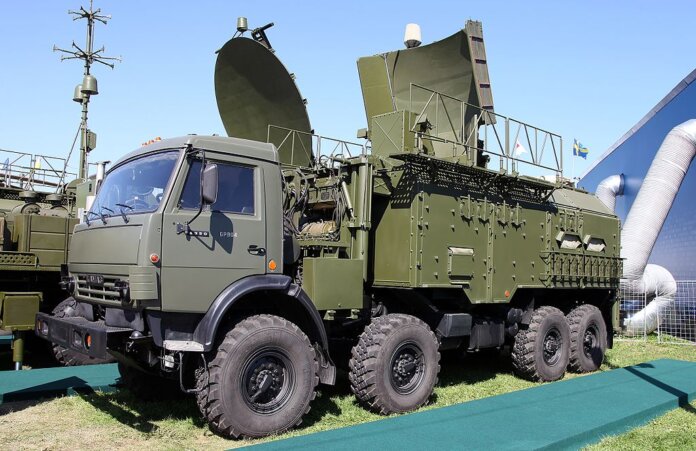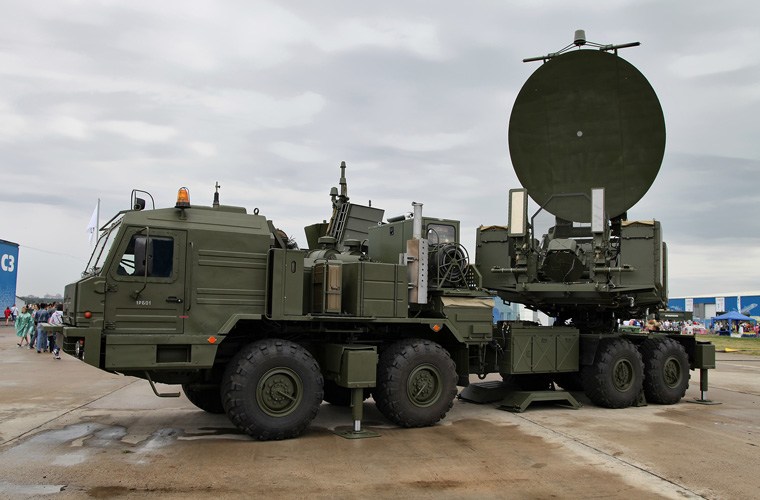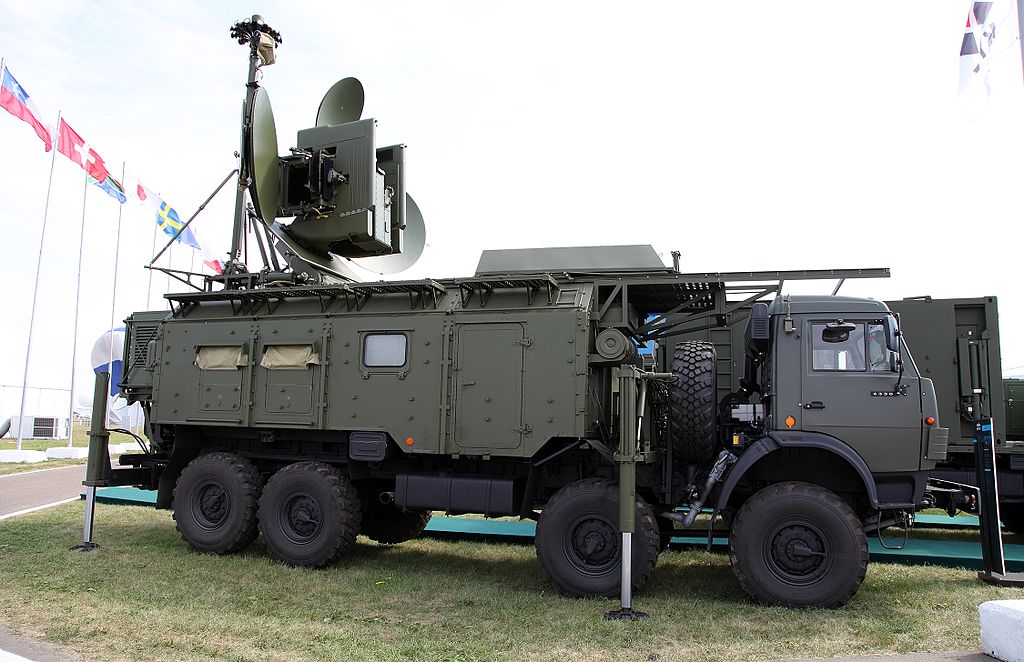
Our Russian IADS Redux series examining the country’s strategic integrated air defence system comes to a close with a look at the electronic warfare capabilities it depends on.
Part-7 of our Russian IADS Redux series examined the ground-based air defence assets the country’s strategic Integrated Air Defence System (IADS) uses to prosecute air targets. Russia’s strategic IADS is unusual as it also deploys Electronic Warfare (EW) capabilities. These capabilities are ground-based and intended to support Surface-to-Air Missile (SAM) batteries and fighters providing the kinetic response.
The key mission of the IADS’ EW units is to deny hostile air assets radar coverage. Russian EW systems will work to jam airborne early warning radars managing strike packages of aircraft. The systems will also jam the fire control radars combat aircraft use to illuminate their targets for attack. Likewise, air-launched and surface-to-surface weapons maybe using radars to detect their targets. Russia’s strategic IADS therefore places a high premium on detecting and attacking these airborne radars.
Electronic Support
The fact that aircraft make Radio Frequency (RF) emissions is something that can be exploited by the EW forces supporting the IADS. Alongside radar, aircraft transmit transponder information to identify themselves and use air traffic control radio. However, in wartime, any aircraft attacking targets in Russia would ‘go dark’ when approaching Russian airspace and perform RF emissions sparingly. Any emissions that are made from the aircraft’s radio or radar systems would be as secure as possible. These emissions would employ Low Probability or Interception/Detection (LPI/D) techniques making them hard to detect and attack.
Nonetheless, Russia’s IADS places a high premium on detecting any tell-tale RF emissions that may reveal an aircraft’s location using the 1L267 Moskva-1 passive radar to this end. Russian sources share that the 1L267 can detect airborne RF emissions at ranges of circa 216 nautical miles/nm (400 kilometres/km). The passive radar is thought capable of detecting emissions on frequencies of 300 megahertz/MHz to 18 gigahertz/GHz. Once a target is detected, the 1L267 will share data with the Control and Reporting Centre (CRC) it reports to. This information will likely be moved across the OSNOD tactical datalink we examined in a previous article. Once at the CRC target information will probably be added to the local Recognised Air Picture (RAP) generated by the Fundament-M air operations battle management system.
Air defenders at the CRC will then decide how the target should be engaged. Target details could be sent back out to local SAM units via OSNOD. Alternatively, target details could be sent to local Aviation Guidance Points (AGPs). The AGPs are responsible for the command and control of fighter squadrons supporting the IADS. It is entirely possible that both electronic and kinetic effects would be used against targets. Electronic attack may be employed initially to jam the offending target’s radar and then followed shortly after by kinetic effects.
Electronic Attack
Armada has been informed that the 1L267 works closely with the 1L269 Krasukha-2 and IRL257E Krasukha-4 electronic attack systems. The primary targets of the 1L267 are airborne S-band (2.3GHz to 2.5GHz/2.7GHz to 3.7GHz) radars. S-band radars are routinely used by Airborne Early Warning and Control (AEWC) aircraft. Attacking these radars would help deny command and control to strike packages of planes depending on AEWC platforms for coordination. Sources say that the 1L267 can engage targets at ranges of up to 135nm (250km). However, the same caveats will apply should the AEWC radar be transmitting LPI/D signals, which it most probably will.
While the 1L267 targets S-band radar, the 1RL257E engages radars transmitting on frequencies of eight gigahertz to 18GHz. Importantly, this covers combat aircraft fire control radars which tend to transmit in X-band and weapons guidance radars transmitting Ku-band (13.4GHz to 14GHz/15.7GHz to 17.7GHz) signals. The 1RL257E has an effective range of circa 162nm (300km).

It appears that each of Russia’s Military Districts (MD) has a single EW brigade. The brigade provides strategic/operational level electronic warfare and includes these 1L267, 1L269 and 1RL257E systems. It is likely that the systems would be allocated to the MD’s Air Force and Air Defence Army when necessary. If Russia’s politico-military command believed air attack to be likely, these EW units would be dispersed into the field to support SAM units and the IADS writ large. Likewise, it is possible that the 1L269 and 1RL257E apparatus could be deployed near potential strategic targets to provide a ‘bubble’ of protective jamming.

by Dr. Thomas Withington
Read our other Russian IADS Redux articles:
- Russian IADS Redux Part-1: Resonating with Resonance
- Russian IADS Redux Part-2: Hilltop View
- Russian IADS Redux Part-3: Strategic Skywatchers
- Russian IADS Redux Part-4: Missing Link
- Russian IADS Redux Part-5: Reset Password?
- Russian IADS Redux Part-6: Fundament-alists
- Russian IADS Redux Part-7: The Effectors












